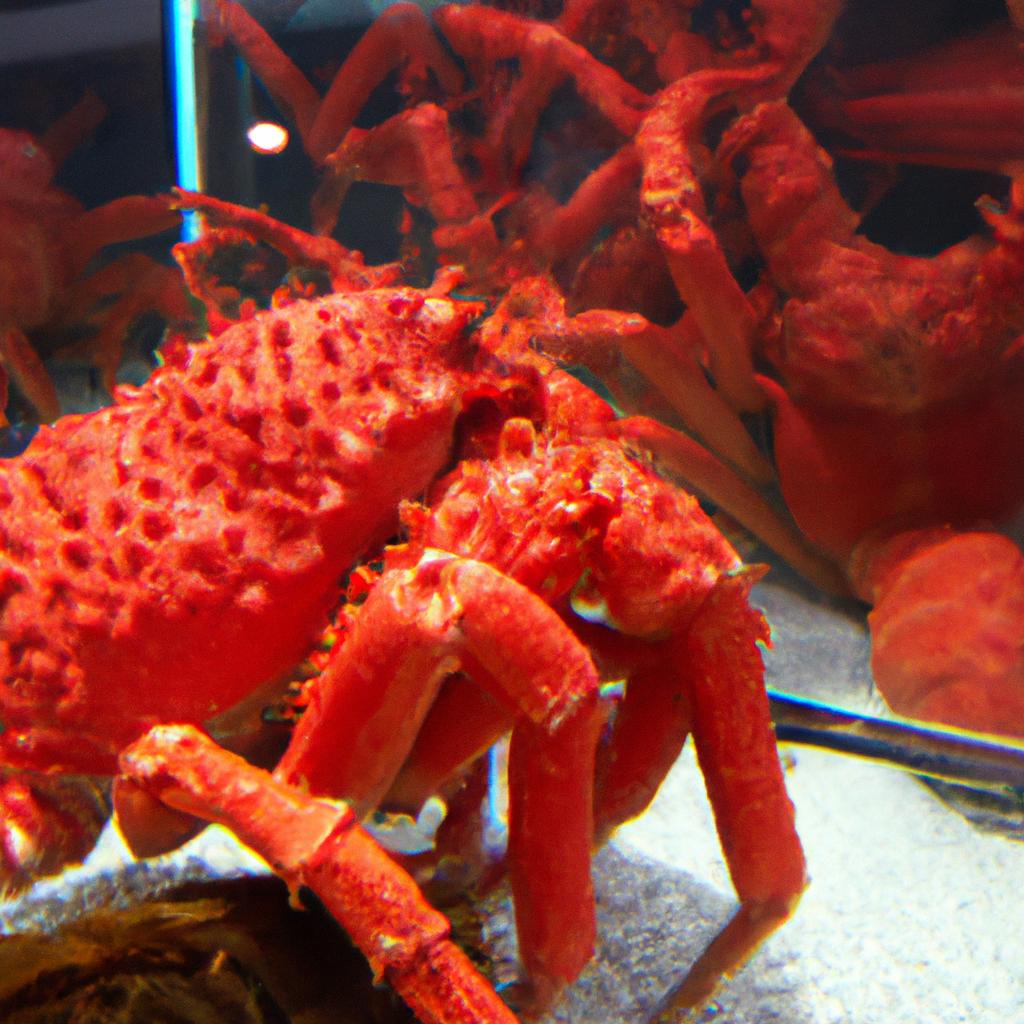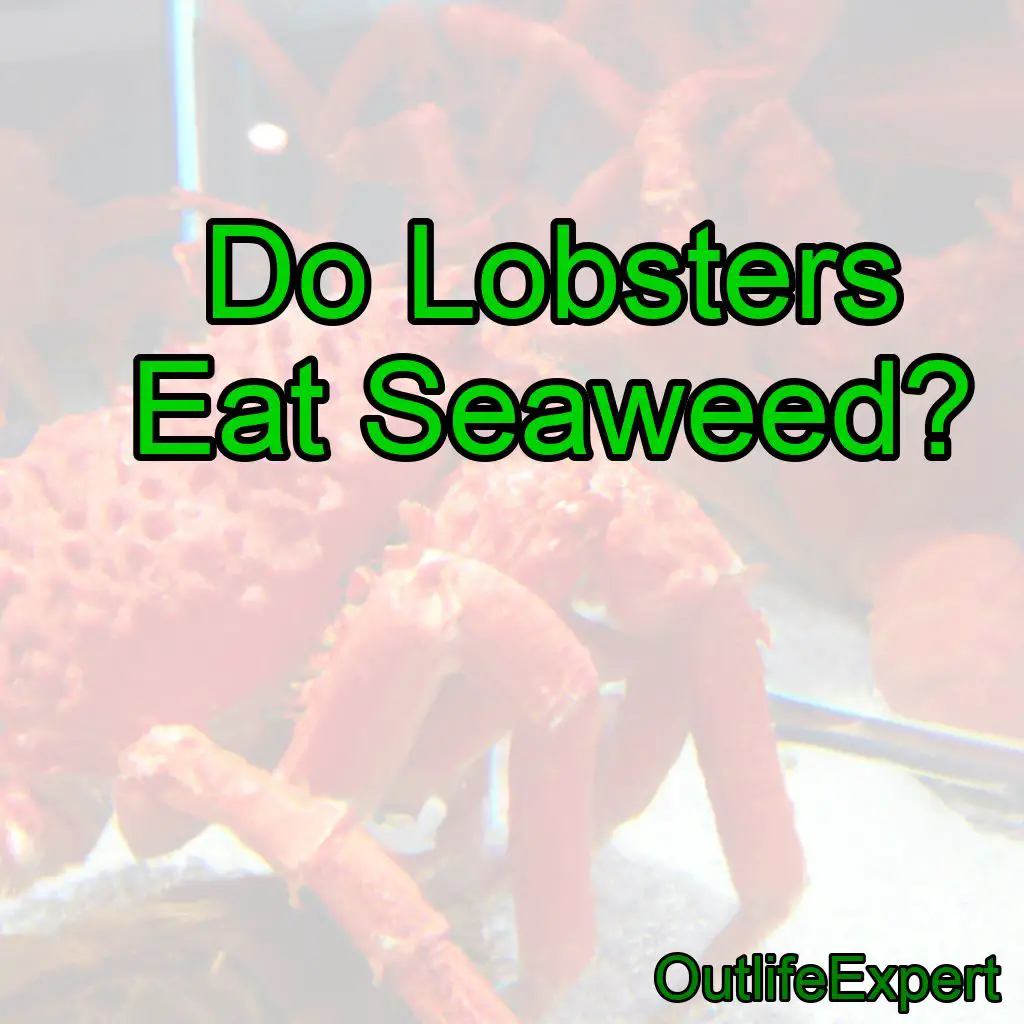Lobsters are fascinating creatures that have intrigued marine biologists and seafood enthusiasts alike for centuries. As a marine biologist, I have spent countless hours observing these captivating crustaceans in their natural habitat. One question that often arises is: do lobsters eat seaweed? The answer is quite simple: while seaweed is not a primary food source, lobsters do consume seaweed occasionally as part of their diverse diet.
In this blog post, we will explore various aspects of the lobster’s diet and the role that seaweed plays in their consumption. Let’s dive in!
What Do Lobsters Typically Eat?
Lobsters are omnivorous creatures, meaning they consume both plant and animal matter. Their diet primarily consists of:
- Fish
- Crabs
- Clams
- Mussels
- Sea urchins
- Small invertebrates
Lobsters are opportunistic feeders and will consume whatever is readily available in their environment. This ensures that they maintain a balanced and diverse diet, which is crucial for their survival in the ever-changing ocean ecosystem.
The Role of Seaweed in a Lobster’s Diet
Seaweed is not a primary food source for lobsters, but it does occasionally make its way into their diet. Seaweed is a form of marine algae and is an essential component of the ocean’s ecosystem, providing a habitat and food source for various marine organisms. Lobsters consume seaweed when they come across it while foraging for other food sources. This consumption is often incidental, as lobsters are not specifically seeking out seaweed as a meal.

Types of Seaweed Consumed by Lobsters
There are several types of seaweed found in the ocean, some of which lobsters may consume. These include:
- Kelp
- Irish moss
- Dulse
Each type of seaweed has its own unique nutritional properties, which can provide lobsters with essential vitamins and minerals. Additionally, some seaweed types contain natural compounds that can act as a natural defense against pathogens, potentially benefiting the lobster’s immune system.
The Nutritional Benefits of Seaweed for Lobsters
Seaweed is rich in essential nutrients, such as:
- Vitamins A, C, and K
- Folic acid
- Calcium
- Iron
- Iodine
While lobsters obtain the majority of their nutrients from their primary food sources, the consumption of seaweed can provide additional vitamins and minerals that are beneficial to their overall health.
How Lobsters Digest Seaweed
Lobsters have a unique digestive system that allows them to break down and process various types of food, including seaweed. Their digestive system consists of:
1. The mouth, where food is ingested and broken down into smaller pieces by the mandibles.
2. The esophagus, which transports food to the stomach.
3. The stomach, which contains a gastric mill that further grinds down food particles.
4. The intestine, where nutrients are absorbed, and waste is eliminated.
This specialized digestive system ensures that lobsters can efficiently process and obtain nutrients from seaweed, as well as their other food sources.
Seaweed Consumption in Lobster Fisheries
In lobster fisheries, seaweed plays a minimal role in the diet of lobsters. This is because lobsters are typically fed a commercially produced diet that meets their nutritional requirements. While seaweed is not commonly included in their feed, lobsters still have access to it in their environment and may consume it incidentally.
The Role of Seaweed in Lobster Aquaculture
In lobster aquaculture, seaweed can play a more significant role in the lobster’s diet. Seaweed can be used as a supplemental feed source, particularly in hatcheries where young lobsters are reared. Including seaweed in their diet may help improve the overall health and survival rates of young lobsters, as well as contribute to a more sustainable aquaculture system.
Potential Impacts of Climate Change on Seaweed and Lobster Diets
Climate change poses a significant threat to marine ecosystems, including the distribution and abundance of seaweed. As ocean temperatures rise and acidification increases, the growth and survival of seaweed could be negatively impacted. This may result in changes to the availability of seaweed as a food source for lobsters and other marine organisms, potentially affecting their diet and overall health.
Conclusion
In conclusion, lobsters do eat seaweed, although it is not a primary food source. Seaweed consumption is often incidental and occurs while lobsters are foraging for other food sources. The nutritional benefits of seaweed can provide essential vitamins and minerals to the lobster’s diet, potentially contributing to their overall health. Seaweed plays a minimal role in lobster fisheries but can be an essential component of sustainable lobster aquaculture. As climate change continues to impact marine ecosystems, the availability of seaweed as a food source for lobsters may be affected.
Here are ten fascinating facts about lobsters and seaweed:
1. Lobsters are omnivores that consume both plant and animal matter.
2. Seaweed is not a primary food source for lobsters but is occasionally consumed.
3. Lobsters eat various types of seaweed, including kelp, Irish moss, and dulse.
4. Seaweed is rich in essential nutrients, such as vitamins, minerals, and iodine.
5. Lobsters have a specialized digestive system that allows them to break down and process seaweed.
6. In lobster fisheries, seaweed plays a minimal role in the lobster’s diet.
7. Seaweed can be used as a supplemental feed source in lobster aquaculture.
8. Including seaweed in a lobster’s diet may improve overall health and survival rates of young lobsters.
9. Climate change may impact the availability of seaweed as a food source for lobsters.
10. Lobsters and seaweed are both integral components of the ocean’s ecosystem.
FAQs
Why do lobsters eat seaweed?
Lobsters eat seaweed as a source of nutrients and fiber in their diet.
Do freshwater lobsters eat algae?
Yes, freshwater lobsters are known to eat algae as part of their diet. However, they also consume other food sources such as aquatic plants, small invertebrates, and detritus.
What does lobsters eat?
Lobsters are omnivores and will eat a variety of foods, including fish, crabs, clams, mussels, and even seaweed and plankton.
What plants do lobsters eat?
Lobsters are primarily carnivorous and feed on a variety of marine animals such as fish, crabs, clams, mussels, and other crustaceans. They do not typically eat plants.
Do freshwater crayfish eat algae?
Yes, freshwater crayfish do eat algae, as well as other plant material, detritus, and small aquatic animals.
Do lobsters eat algae?
Yes, lobsters are known to eat algae as part of their diet. However, they also consume a variety of other foods such as crustaceans, mollusks, and fish.




